- 0427 524 029
- Contact Us

There is still much confusion about the Reiki story and what is “Authentic” Reiki, with more teachings coming from different styles of “Japanese Reiki”, and even what is still taught in the Reiki Gakkai, which may be similar or different to what we are now learning through books such as those from Doi Hiroshi, Frans Stiene, Frank Arjarva Petter and Justin B. Stein. We are also now seeing more Japanese Reiki training being taught in the Western world, including Usui Reiki Ryoho- the Way of Reiki from Frans Stiene, Komyo ReikiDo from Hyakuten Inamoto, and more recently Frank Arjava Petter from Jikiden Reiki which is now being taught in our area of the world. Firstly I’d like to discuss the differences between Jikiden Reiki and Komyo ReikiDo, because this topic and the differences has been recently brought to my attention for discussion, now that Frank Arjava Petter is about to teach his final Jikiden class in New Zealand in September, (he is retiring from Jikiden after this workshop) and our upcoming Interview with Hyakuten Inamoto this week on Thursday. It seems that people always want to compare and choose one over the other, but as you will see, there is no style that is superior, they are just different, and each holds their own merit. Next we will discuss some of the other Japanese styles available to us, and some you may not have heard of.
So let’s dive in to gain a deeper understanding.
Interestingly, Usui Mikao’s teachings branched out possibly even during his own lifetime. His early teachings appear to have been less formalised and structured than what later developed. Still much confusion has developed over the last century surrounding the nature and contents of the teachings. At present much of the ‘new’ information has yet to be verified and it is hoped that this will occur for the benefit of all practitioners. Here is a list of some of Usui Sensei’s students. Not all were shinpiden students and some have not yet been verified. There are said to have been 21 shinpiden students according to Usui Reiki Ryoho Gakkai member, Doi Hiroshi, although other sources say 16 or 20.
Interestingly, Usui Mikao’s teachings branched out possibly even during his own lifetime. His early teachings appear to have been less formalised and structured than what later developed. Still much confusion has developed over the last century surrounding the nature and contents of the teachings. At present much of the ‘new’ information has yet to be verified and it is hoped that this will occur for the benefit of all practitioners. Here is a list of some of Usui Sensei’s students. Not all were shinpiden students and some have not yet been verified. There are said to have been 21 shinpiden students according to Usui Reiki Ryoho Gakkai member, Doi Hiroshi, although other sources say 16 or 20.
Here are some of Usui Sensei’s Students:
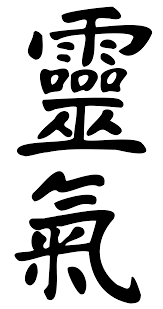
The Usui Reiki Ryoho Gakkai claims to have been created by Usui Mikao in 1922. The society still exists today, and has its seventh president. It is closed to foreigners and members are asked not to discuss the details of the society with non-members. When this society was created members of the Japanese navy largely attended it. Doi Hiroshi is a member of this society still and teaches it to Western students such as Frans Stiene. The Gakkai do not advertise or wish to have any contact with Westerners in general. Justin B. Stein recently confirmed in our Interview that he is a member. He is a well-known and respected historian in Japanese Culture, religious studies and Reiki, whom I recently interviewed in our “Interviews with the Masters” series, which you will find on our website.
There were once 80 divisions of the Usui Reiki Ryoho Gakkai throughout Japan but today there are only 5 and all the teaching is now done in Tokyo. There are 3 major levels in the Usui Reiki Ryoho Gakkai. These are Shoden, Okuden and Shinpiden, the teacher level. Within these levels there are 6 levels of proficiency. Each member is supplied with the Reiki Ryoho Hikkei and Shiori.
Here is a list of President’s from Usui Mikao to modern day.
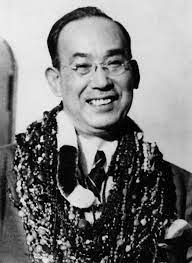
One of the 21 teacher students of Usui Mikao. He was a Soto Zen practitioner who naturally included Shinto into its practices. In May 1925, Hayashi became a student of Usui Mikao’s school in Tokyo. He was a retired Naval Officer (still in the reserves) and a surgeon according to some. Though Hyakuten Inamoto has stated of recent times that it was not possible for him to have become a doctor. He was about 45 years old when he met Usui Mikao. The length of his study with Usui Mikao was relatively short as he only studied the teachings for 10 months before Usui Mikao’s death in March 1926.
t is interesting to note that Hayashi didn’t teach the reiju but most likely taught an attunement, which includes the mantras and symbols. We know this because his students use mantras and symbols in the attunement and yet other students of Usui Mikao do not.
Hayashi is thought to have been a member of the Usui Reiki Ryoho Gakkai at first but broke away in 1931 beginning his own branch called Hayashi Reiki Ryoho Kenkyu kai. It is believed today that he is the first practitioner to have created a professional clinic using Reiki. Prior to this healing appears to have taken second place to spiritual development. Hayashi is best known for having taught Hawayo Takata who then brought his teachings to America where they have flourished and are now taught around the whole world. In Japan, traditional teachers believe that what Hawayo Takata taught was in fact ‘Hayashi’s Reiki’ rather than the teachings of Usui Mikao, so this is very interesting to note.
He wrote in 1938 that he had trained 13 Reiki Masters.
Some of his students were:
He passed away on the 10th of May 1940. Hawayo Takata reported that he died ceremoniously of a self-induced stroke, Yamaguchi, recounts that he had killed himself by ‘breaking an artery’ while others say that as he was a military man the honorable method of death would certainly have been seppuku.
With our recent Interviews with the Masters series conducted in 2024 and 2025 by Carol Macrae, in her role as Chair for Reiki Australia she interviewed many Reiki Masters and experts, including Frank Arjarva Petter last year, who was the then Vice President of Jikiden Reiki (he is in the process of retiring from this position after one more class in New Zealand in September). I am also interviewing Hyakuten Inamoto this week, and both teach a form of Japanese Reiki and I studied Komyo ReikDo with Hyakuten Inamoto in 2017.
From my talks with Justin B. Stein, Frans Stiene, Arjarva, Sally Wain, Patrick Zeigler, Walter Lübeck and the others we gained a deeper understanding and new perspective on Japanese Reiki, and wanted to give a clearer picture of the different styles of Japanese Reiki, which is very different from our Western style, even though both these former 2 Japanese Styles I mentioned Komyo ReikiDo and Jikiden) and the Western style from Hawayo Takata all come through the Hayashi lineage. Justin Stein said in our interview that Chujiro Hayashi was not teaching Usui Reiki, he was teaching Hayashi Reiki, so we need to keep things in perspective when we make any statement about what is “authentic”. Everything is true on some level.
As with many things, the human ego can get in the way as we look to find truth, and competition can arise, however let me remind you that this is not the essence of Reiki. Reiki is love, light and acceptance of all. Reiki seeks to open us up, not close us down. So let us keep, our minds open as there are many rivers to the one ocean, and it appears that throughout history, every teacher takes what they learn and adapts it to suit their personality, their understanding, their preferences and their interests. This cannot be avoided as we are all simply human beings, doing the best we can with what we have. We all strive to add value and help our students learn what they need to learn so they will embrace the teachings and put them to use in their own lives.
See our Interviews HERE.

Hyakuten Inamoto studied Reiki with Chiyoko Yamaguchi in 1997. At the time, she was in her mid-70s and still teaching the system she had learned from Chujiro Hayashi in 1938. Mrs Yamaguchi was not teaching anyone before Inamoto Sensei and 4 others joined in for Reiki practice. Tadao Yamaguchi was not present at these gatherings. Chiyoko Yamaguchi passed away in 2003.
Here is a brief timeline:
• 1938: Chiyoko Yamaguchi was initiated into Reiki by Chujiro Hayashi at age 17.
• 1997: Hyakuten Inamoto sought out Chiyoko Yamaguchi to learn what he believed was a more traditional form of Reiki. Tadao Yamaguchi was not present at these gatherings and Tadao was not interested in teaching Reiki in 1997.
• 1998: Hyakuten Inamoto formed Komyo ReikiDo adding his own approach.
• 2000: Jikiden Reiki was formed by Tadao Yamaguchi.
• 2003: Chiyoko Yamaguchi passed away. After her death, her son Tadao Yamaguchi then continued teaching Jikiden Reiki.
Let us look at a comparison and history between Chiyoko Yamaguchi, Hyakuten Inamoto, Jikiden Reiki, and Komyo Reiki, highlighting their key differences, shared roots, and philosophy.
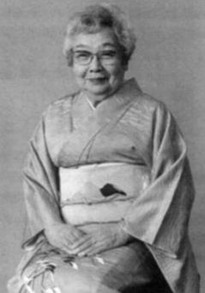

• Hyakuten Inamoto sought a Reiki teacher to learn about Reiki after seeing a book on Reiki in Japanese. He found Mrs Yamaguchi in 1997.
• He studied under Chiyoko Yamaguchi and was deeply influenced by her simple, practical, and spiritual approach. Mrs Yamaguchi at that time had no specific curriculum and did not know the history of Reiki Ryoho so she taught students how to practice only.
• Inamoto Sensei received over 60 Reiju from Mrs Yamaguchi. Mrs Yamaguchi taught Inamoto Sensei how to do Reiju after a year of attending weekly practice.
• He also researched Reiki history and original Japanese texts, developing a strong interest in restoring the cultural context of Usui Reiki Ryoho and included them in his Reiki system/teachings.
• In 1998 Hyakuten Inamoto formed Komyo Reiki Kai and then changed the name to Komyo ReikiDo in 2016.
Here is how we (5 students, but 3 students dropped out a few months later) did the training with Mrs. Yamaguchi:
Please be reminded that Mrs. Yamaguchi had no Shoden or Okuden or anything like that. She had no systematic course (curriculum) in her teachings. Everthing was about the practice.
Mrs. Yamaguchi asked me to help Tadao with his newborn Jikiden. It was my great pleasure to do so, and Tadao was happy about my help. One day I was invited to join Jikiden Reiki course so that I could be of their English translator. Mrs.Yamaguchi and Tadao said “no fee for Hyakuten-san.” I responded “why?” They said it was as a token of their appreciation and gratitude for my help. I was the 14th on the offical Jikiden Reiki student list.
The very 1st student was Doi Sensei of Gendai Reiki Ho, who also helped Tadao in many ways such as giving him suggestions, advice and making Jikiden manuals.
I teach a different system named Komyo Reiki, I never ever claimed that I teach Jikiden Reiki. Reiki invites us Reiki Ryoho Practitioners for a path to Oneness by transcending all the differences and a world of separateness. If one is a true Reiki practitioner, naturally he can rise above the differences and easily reach a world of Oneness. There is no such word “judgmental” in the Reiki Dictionary.
Let us look at a comparison and history between Chiyoko Yamaguchi, Hyakuten Inamoto, Jikiden Reiki, and Komyo Reiki, highlighting their key differences, shared roots, and philosophy.
Founded by: Tadao Yamaguchi in 2000
Lineage:
Mikao Usui → Chijuro Hayashi → Chiyoko Yamaguchi → Tadao Yamaguchi Core Features:
Focuses on:
Literal meaning: Komyo – Illumination, enlightenment, bright light Reiki – sacred universal energy Do – Way or Path in a spiritual context Possible translation: Way or Path to Illumination/Enlightenment through Reiki Ryoho.
Founded by: Hyakuten Inamoto in 1998.
Lineage:
Mikao Usui →Chikuro Hayashi → Chiyoko Yamaguchi → Hyakuten Inamoto
Core Features:
Although both Inamoto and Yamaguchi studied under Chiyoko, they chose different paths:
Tadao was not present as Mrs Yamaguchi taught Inamoto Sensei, and was not teaching any style, so there was no competition.
Chiyoko Yamaguchi was initiated into Reiki by Chujiro Hayashi in 1938 and practised quietly for decades. In 1997, Hyakuten Inamoto, a Buddhist priest and Reiki teacher, sought her out to study what he believed was a more traditional form of Reiki. He was deeply influenced by her authentic, Japanese practice. Inamoto Sensei formed Komyo ReikiDo in 1998.
Jikiden Reiki was established in 2000. Following Chiyoko’s passing in 2003, her son Tadao continued Jikiden’s legacy, preserving the original teachings from Hayashi as passed down through Chiyoko. Meanwhile, at this time, Hyakuten Inamoto had already established Komyo Reiki, blending traditional Reiki with his own teachings, focusing on Reiki as a tool for both healing and enlightenment.
Both systems honour the original roots but serve different needs:
There is clearly a value a use and a great interest in both these types of Japanese Reiki as we all search for a path that resonates with the authentic teachings of Mikao Usui, so it is wonderful to see that both can co-exist with our Western Style of Usui Shiki Reiki Ryoho that has come through Hawayo Takata.
After interviewing Frans Stiene (International House of Reiki), Johannes Reindl (Grand Master and Lineage bearer of Usui Shiki Reiki Ryoho), Patrick Zeigler (Sekhem/All Love), Sally Wain (Komyo ReikiDo), Walter Lübeck (Rainbow Reiki) and several others in our series, I found it very interesting that each Master had a different focus, and emphasis on Reiki and Energy work. Some were focussed on the physical healing, some on the spiritual practice and some on the Buddhist teachings and some on enlightenment. It is clear that all styles come from the heart, and rather than comparing or trying to discount any, we should embrace all and take what we can from all learnings to find our own truth, for this is how we grow and connect more deeply as human beings. This is the essence of Reiki. Co-operation, not competition. There is no judgement, just acceptance and love.
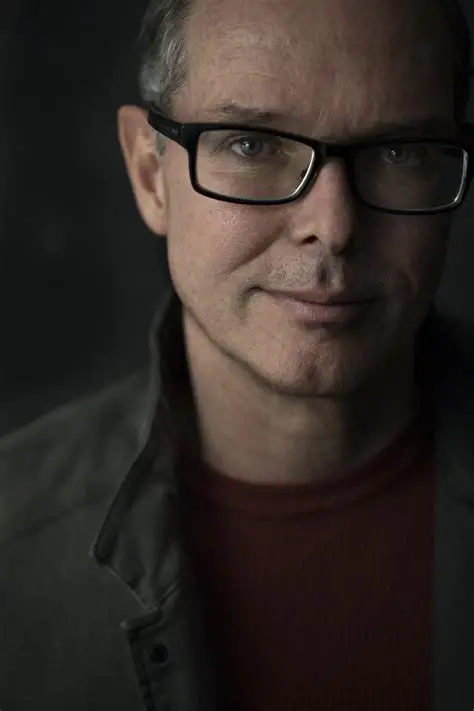
This is another Japanese form of Reiki which is taught in Australia. This style focuses on teaching people the 5 elements of the system of Reiki.
I spoke with Frans recently and he said: These 5 elements are the Reiki precpets, hands on healing, meditation, symbols and mantras, and reiju/attunement/initiation. Through these practices we learn how to embody the Reiki precepts in our daily life so that we can lead a life without anger and worry. that we can be grateful, true to our way and our being and compassionate to ourselves and others.
Frans does not do Western Style Attunements, he used Japanese styles.
Frans trained with Hyakuten Inamoto in Japan in 2001 and then in 2003 with Hiroshi Doi who is a current member of the Reiki Gakkai which bypasses Hayashi.
rans says “Key teaching is for me: rediscovering your true nature. The practices are just that. Just like a car is a practice but the key of having a car is to travel from A to B.”
“In a way there is just one practice, we can say modern or traditional. Many Japanese teachers teach a modern form.”
I want to thank Frans for offering more insight after I published the first draft of this article.
 Frans Stiene – Usui Reiki Ryōhō – “The Way of Reiki”
Frans Stiene – Usui Reiki Ryōhō – “The Way of Reiki”Yukio Mochizuki
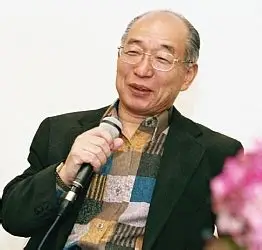
Although the Japanese Reiki Gakkai do allow some foreigners to join their association, it is limited. Therefore in order to gain a greater understanding of Usui Reiki, we have taken the teachings we were offered through the Hayashi lineage teachers, however Hiroshima Doi, a current member of the Gakkai has shared some stories and wisdom which give us a greater understanding and a new perspective about the teachings of Mikao Usui, and whether the Reiki we have always thought of as Usui Reiki may in fact be Hayashi Reiki.
Chujiro Hayashi left the Usui Reiki Ryoho Gakkai (Usui Reiki Healing Method Society) after the death of Mikao Usui, around 1927-1928. Following Usui’s passing, Hayashi established his own independent organization called the Hayashi Reiki Kenkyukai (Hayashi Reiki Research Institute).
“Although Hayashi Sensei advertised to the public that he taught “Usui” Reiki Ryoho after he had become independent of the Gakkai, he actually taught “Hayashi” Reiki. He adopted his own theories and techniques aimed at curing disease.”
– Hiroshi Doi
The two booklets Shin-Shin Kaizen Usui Reiki Ryoho Kokai Denju Setsumei and the Usui Reiki Ryoho Hikkei, both handed out by the Usui Reiki Ryoho Gakkai, contain an interview with Mikao Usui. His answer to one of the questions is a very important pointer to Usui Sensei’s teachings:
“Q. Does Usui Reiki Ryoho only heal illness?
A. No. Usui Reiki Ryoho does not only heal illness. Mental illnesses such as agony, weakness, timidity, irresolution, nervousness and other bad habits can be corrected. Then you are able to lead a happy life and heal others with the mind of Kami or Hotoke [Buddha]. That becomes the principal object.”
“Some groups claim that 臼井霊気療法 Usui Reiki Ryoho was intended to cure disease, as the Japanese word 療法 “ryoho” literally means the curing therapy. If so, Usui Reiki Ryoho would have been just another one of the treatment therapies that existed before Usui Sensei. Usui Sensei said, “I have never studied any methods for disease treatment.” He also stated, “Usui Reiki Ryoho makes us fit and well, moderates our thought and enhances one’s joy of life.” and “Usui Reiki Ryoho heals Kokoro [mind and spirit] first, and then makes the body strong and healthy.” These statements of his clearly mean that he did not give first priority to curing disease. Usui Sensei wrote two descriptive statements that introduce 五戒 Go-kai The Five Precepts: 招福の秘法 “Shofuku no Hiho” “The secret method to invite happiness” and the second one, 萬病の霊薬 “Manbyo no Reiyaku” “The miraculous remedy/elixir for all diseases” that follows it. In this way he indicates that the ultimate goal of Usui Reiki Ryoho is to become happy and that we enter this happy state by becoming healthy through hand healing.” – Hiroshi Doi
“Meditation not only makes your spiritual energy stronger but also cures illnesses and helps to get rid of fatigue.” – Reiki Ryoho no Shiori which is handed out by the Usui Reiki Ryoho Gakkai.
“Because Reiki Therapy improves self – healing ability by using the spiritual energy coming from your own body, it’s safe and anyone can do it.” – September 1974 Usui Reiki Therapy Assosiation Headquarters Chairman Toyokazu Kazuwa (Reiki Ryoho no Shiori which is handed out by the Usui Reiki Ryoho Gakkai.)
“For the members of our association, please keep this in mind that the more you have a higher virtue in yourself the stronger your spiritual energy becomes.” – Reiki Ryoho no Shiori which is handed out by the Usui Reiki Ryoho Gakkai.
“Strict teachings and rules of Master Usui: One of the most strict rules which he taught us is that your spirit as a small universe has to be always united with the spiritual power of the whole universe as one.” – Reiki Ryoho no Shiori which is handed out by the Usui Reiki Ryoho Gakkai.
From Doi’s book: – Modern Reiki Method for Healing By Hirsohi Doi
“The most basic technique in Dento Reiki [Usui Reiki Ryoho Gakkai] involves detecting a Byosen and then placing the hands on the affected area in order to perform an effective healing treatment…Different Reiki healers experience different kinds of sensations.”
“When there are many Byosen, the technique known as Reiji-ho can be employed for greater effectiveness. Reiji-ho allows for the hands to be naturally drawn to the area that needs to be treated. This is a very important technique in Dento [Usui Reiki Ryoho Gakkai] Reiki.”
“When Usui Sensei was alive, being chosen as Shinpiden practitioners designated that those Gakkai members were allowed to take person-to-person lecture directly from him on how to attain Anshin Ritsumei.”
“But I could find signs that he [Chujiro Hayashi] had already converted the “Usui method” into the “Hayashi method” even before he taught Takata Sensei. He seemed to try modernizing Reiki-ho based on his medical knowledge and experience as a practical therapist.”
“Next, although Hayashi Sensei advertised to the public that he taught “Usui” Reiki Ryoho after he had become independent of the Gakkai, he actually taught “Hayashi” Reiki. He adopted his own theories and techniques aimed at curing disease.”
“Dento Reiki as it was practiced by members of the Usui Reiki Ryoho Gakkai before Usui sensei’s death drastically changed after his passing and even more after the end of Word War II.”
“The training according to the Natural Law of this whole world develops human’s spirituality. When you are convinced of this Truth, your committed training actualises the unification with the Universe. The word you speak and the action you take becomes One with the Universe and they effortlessly work as the absolute limitlessness. This is in other words, the true nature of the human.”
“So the old Gakkai members said that Usui Sensei taught the way to Satori very intensely to those who had achieved a certain level.”
“The basic 12 hand positions and the attunements procedures [with the symbols and mantras] we use today are all derived from Hayashi-sensei’s techniques”.
– A Modern Reiki Method for Healing by Hiroshi Doi
“Reiju, as currently practiced is said to be based upon the form developed by Hayashi-sensei, and then given to Hawayo Takata. (from Hiroshi Doi’s manual)
Quotes from Usui’s students, from doi san
“Everything in the Universe possesses Reiki without any exception.”
“We humans hold the Great Reiki that fills the Great Universe. The higher we raise the vibration of our own being, the stronger the Reiki we have inside will be.”
“The Natural Law of the Great Universe and each human spirit as a small universe must be constantly united and exist as One.”
“The Universe exists in me, and I exist in the Universe.” “Komyo exists in me and I exist in Kyomyo.”
“Everything in the universe is produced and developed by the magnificent Reiki that fills the Great Universe. Humans are a microcosm that takes the Great Spirit from macrocosm; everyone holds a part of this Great Reiki in his body. Therefore, we must always try to cultivate spirituality so that we can receive as much Great Reiki of the Universe as possible.”
“The universal law of the great universe and one’s mind must be perpetually integrated.”
“Human consciousness can go anywhere in the universe in an instant. You must endeavor to develop your consciousness quickly and not to rely on the symbols for too long”
“The training according to the Natural Law of this whole world develops human’s spirituality. When you are convinced of this Truth, your committed training actualizes the unification with the Universe. The word you speak and the action you take becomes One with the Universe and they effortlessly work as the absolute limitlessness. This is in other words, the true nature of the human.”
from 会員のみに配布する霊気療法のしおりLeaflet of Reiki Ryoho –Members Only. It was issued by the Usui Reiki Ryoho Gakkai when Wanami sensei was the 5th president.
Different translation: “Usui Sensei taught that practices which are based on the correct understanding of nature and the universe help develop the self. When Reiki practitioners come to a full understanding of such practices and are able to discipline themselves, their speech and conduct fall into alignment with the universe and they attain infinitive power. This is what it means to be a true human being.” (from Doi’s shinpiden manual)
“Usui Sensei did not give additional healing trainings but I heard that he often taught classes about a Shihan’s mental attitude in order to improve one’s teaching methods when teaching about healing to the members. Though his one-on-one Shinpi-den lecture did not include healing training, I also heard that Usui Sensei’s mentorship greatly enhanced the healing ability of many of the Shinpi-den practitioners, as it strengthened their resonance with the Universe and encouraged the awareness that a human is the small universe derived from the Great Universe.” – Hiroshi Doi
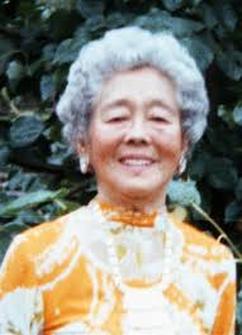
When John Harvey Gray studied Reiki with Takata, he made over 20 audio tapes of her lectures and classes. On one of the tapes she discusses travelling to Japan in order to teach her approach to Reiki.
‘While there, she met some Japanese citizens who were actively practicing and preserving Reiki as they understood it in Japan. Takata regarded their approach as entirely valid, but inappropriate for the West. It was highly complex, required years of training and was closely intertwined with religious practices. She felt these factors would deter students in the West and hobble the spread of Reiki through the world at a time when, in her view, it was urgently needed.”
– Hand to Hand by John Harvey Gray
From all of our research we can gain a deeper perspective of Reiki, whether it is the Japanese Usui or Hayashi System or the Western System, to understand there are many rivers to the one ocean, however Usui intended us to use Reiki to return back to our authentic self. It does not matter which path we take as long as it is the path that works best for us in bringing inner peace without judgement as one path being greater than another. Everything works with the right intention and an open heart and mind. As we heal our minds and come back into a higher state of being we can heal our bodies.
I hope you have enjoyed this article and I give thanks to Frans Stiene who also helped give me more clarification and knowledge about the information from the Gakkai.
I look forward to interviewing Hyakuten Inamoto on June 26th, and hope you enjoy our interviews which are aimed at opening hearts and minds to the magic and the mystery that is entwined in all of our lives through Reiki.
Check out our other Interviews with the Masters on my website: https://carolmacrae.com/interviews-with-the-masters/ and on our Reiki Australia Website: https://www.reikiaustralia.com.au/interview-with-the-masters/ Each interview will be added after it is recorded and uploaded to YouTube. May all forms of Reiki, Japanese and Western, bring you back to yourself.
Gassho ![]()
Carol xo
P: 0413346637
Mind-Body-Magic
Change Your Mind – Change Your Life!